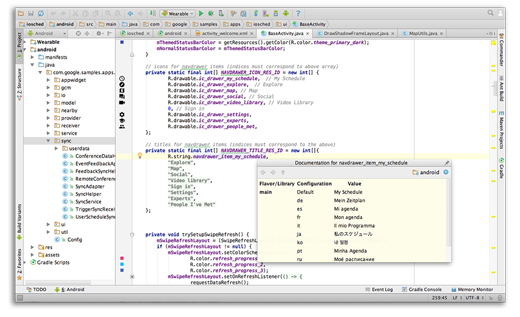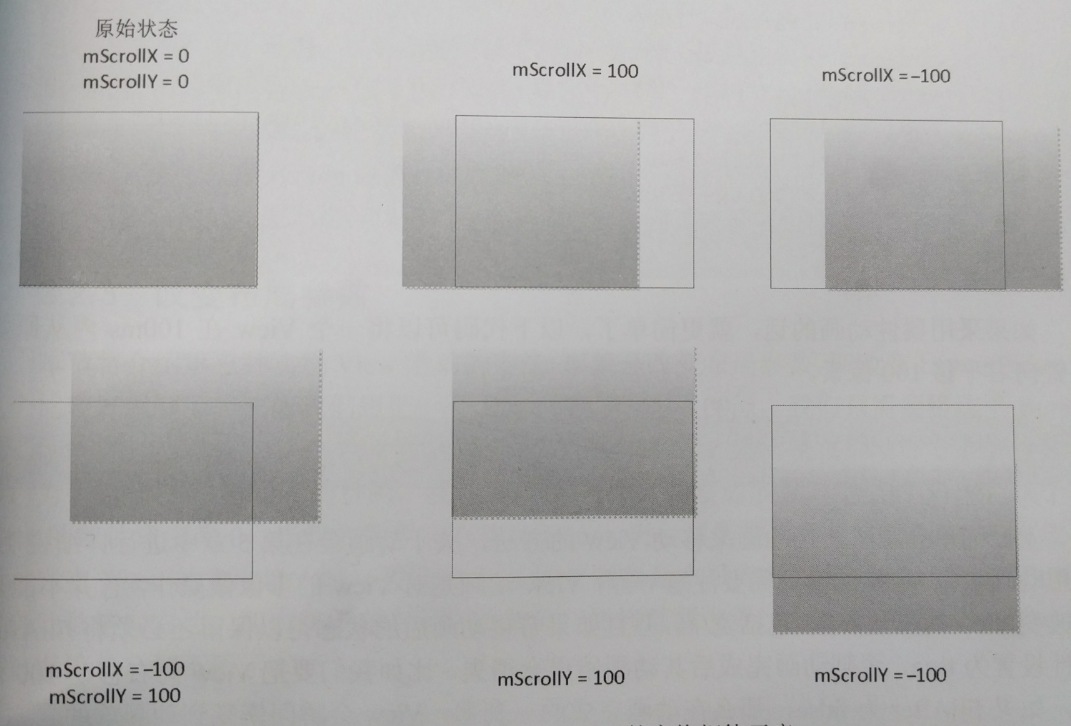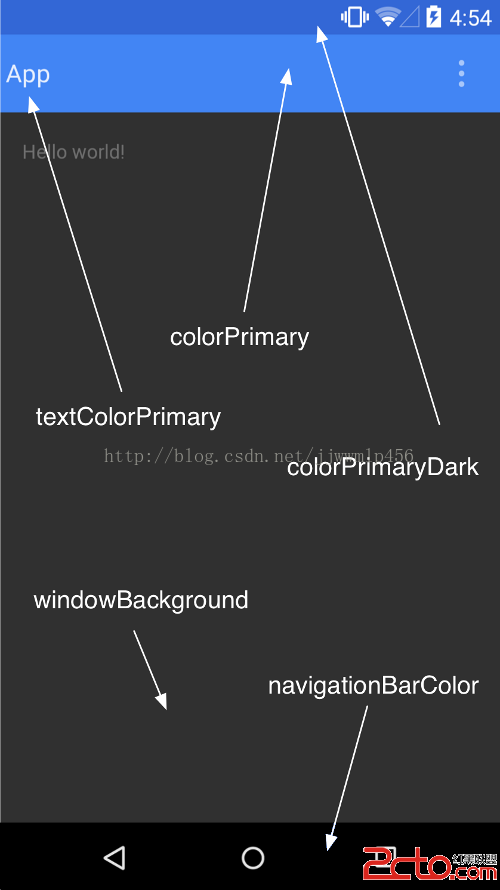編輯:關於Android編程
[cpp]
#include <stdio.h>
#include <stdlib.h>
#include <string.h>
#include <assert.h>
#include <android/log.h>
// for native audio
#include <SLES/OpenSLES.h>
#include <SLES/OpenSLES_Android.h>
#include "VideoPlayerDecode.h"
#include "../ffmpeg/libavutil/avutil.h"
#include "../ffmpeg/libavcodec/avcodec.h"
#include "../ffmpeg/libavformat/avformat.h"
#define LOGI(...) ((void)__android_log_print(ANDROID_LOG_INFO, "graduation", __VA_ARGS__))
AVFormatContext *pFormatCtx = NULL;
int audioStream, delay_time, videoFlag = 0;
AVCodecContext *aCodecCtx;
AVCodec *aCodec;
AVFrame *aFrame;
AVPacket packet;
int frameFinished = 0;
// engine interfaces
static SLObjectItf engineObject = NULL;
static SLEngineItf engineEngine;
// output mix interfaces
static SLObjectItf outputMixObject = NULL;
static SLEnvironmentalReverbItf outputMixEnvironmentalReverb = NULL;
// buffer queue player interfaces
static SLObjectItf bqPlayerObject = NULL;
static SLPlayItf bqPlayerPlay;
static SLAndroidSimpleBufferQueueItf bqPlayerBufferQueue;
static SLEffectSendItf bqPlayerEffectSend;
static SLMuteSoloItf bqPlayerMuteSolo;
static SLVolumeItf bqPlayerVolume;
// aux effect on the output mix, used by the buffer queue player
static const SLEnvironmentalReverbSettings reverbSettings =
SL_I3DL2_ENVIRONMENT_PRESET_STONECORRIDOR;
// file descriptor player interfaces
static SLObjectItf fdPlayerObject = NULL;
static SLPlayItf fdPlayerPlay;
static SLSeekItf fdPlayerSeek;
static SLMuteSoloItf fdPlayerMuteSolo;
static SLVolumeItf fdPlayerVolume;
// pointer and size of the next player buffer to enqueue, and number of remaining buffers
static short *nextBuffer;
static unsigned nextSize;
static int nextCount;
// this callback handler is called every time a buffer finishes playing
void bqPlayerCallback(SLAndroidSimpleBufferQueueItf bq, void *context)
{
assert(bq == bqPlayerBufferQueue);
assert(NULL == context);
// for streaming playback, replace this test by logic to find and fill the next buffer
if (--nextCount > 0 && NULL != nextBuffer && 0 != nextSize) {
SLresult result;
// enqueue another buffer
result = (*bqPlayerBufferQueue)->Enqueue(bqPlayerBufferQueue, nextBuffer, nextSize);
// the most likely other result is SL_RESULT_BUFFER_INSUFFICIENT,
// which for this code example would indicate a programming error
assert(SL_RESULT_SUCCESS == result);
}
}
void createEngine(JNIEnv* env, jclass clazz)
{
SLresult result;
// create engine
result = slCreateEngine(&engineObject, 0, NULL, 0, NULL, NULL);
assert(SL_RESULT_SUCCESS == result);
// realize the engine
result = (*engineObject)->Realize(engineObject, SL_BOOLEAN_FALSE);
assert(SL_RESULT_SUCCESS == result);
// get the engine interface, which is needed in order to create other objects
result = (*engineObject)->GetInterface(engineObject, SL_IID_ENGINE, &engineEngine);
assert(SL_RESULT_SUCCESS == result);
// create output mix, with environmental reverb specified as a non-required interface
const SLInterfaceID ids[1] = {SL_IID_ENVIRONMENTALREVERB};
const SLboolean req[1] = {SL_BOOLEAN_FALSE};
result = (*engineEngine)->CreateOutputMix(engineEngine, &outputMixObject, 1, ids, req);
assert(SL_RESULT_SUCCESS == result);
// realize the output mix
result = (*outputMixObject)->Realize(outputMixObject, SL_BOOLEAN_FALSE);
assert(SL_RESULT_SUCCESS == result);
// get the environmental reverb interface
// this could fail if the environmental reverb effect is not available,
// either because the feature is not present, excessive CPU load, or
// the required MODIFY_AUDIO_SETTINGS permission was not requested and granted
result = (*outputMixObject)->GetInterface(outputMixObject, SL_IID_ENVIRONMENTALREVERB,
&outputMixEnvironmentalReverb);
if (SL_RESULT_SUCCESS == result) {
result = (*outputMixEnvironmentalReverb)->SetEnvironmentalReverbProperties(
outputMixEnvironmentalReverb, &reverbSettings);
}
// ignore unsuccessful result codes for environmental reverb, as it is optional for this example
}
void createBufferQueueAudioPlayer(JNIEnv* env, jclass clazz, int rate, int channel,int bitsPerSample)
{
SLresult result;
// configure audio source
SLDataLocator_AndroidSimpleBufferQueue loc_bufq = {SL_DATALOCATOR_ANDROIDSIMPLEBUFFERQUEUE, 2};
// SLDataFormat_PCM format_pcm = {SL_DATAFORMAT_PCM, 2, SL_SAMPLINGRATE_16,
// SL_PCMSAMPLEFORMAT_FIXED_16, SL_PCMSAMPLEFORMAT_FIXED_16,
// SL_SPEAKER_FRONT_LEFT | SL_SPEAKER_FRONT_RIGHT, SL_BYTEORDER_LITTLEENDIAN};
SLDataFormat_PCM format_pcm;
format_pcm.formatType = SL_DATAFORMAT_PCM;
format_pcm.numChannels = channel;
format_pcm.samplesPerSec = rate * 1000;
format_pcm.bitsPerSample = bitsPerSample;
format_pcm.containerSize = 16;
if(channel == 2)
format_pcm.channelMask = SL_SPEAKER_FRONT_LEFT | SL_SPEAKER_FRONT_RIGHT;
else
format_pcm.channelMask = SL_SPEAKER_FRONT_CENTER;
format_pcm.endianness = SL_BYTEORDER_LITTLEENDIAN;
SLDataSource audioSrc = {&loc_bufq, &format_pcm};
// configure audio sink
SLDataLocator_OutputMix loc_outmix = {SL_DATALOCATOR_OUTPUTMIX, outputMixObject};
SLDataSink audioSnk = {&loc_outmix, NULL};
// create audio player
const SLInterfaceID ids[3] = {SL_IID_BUFFERQUEUE, SL_IID_EFFECTSEND,
/*SL_IID_MUTESOLO,*/ SL_IID_VOLUME};
const SLboolean req[3] = {SL_BOOLEAN_TRUE, SL_BOOLEAN_TRUE,
/*SL_BOOLEAN_TRUE,*/ SL_BOOLEAN_TRUE};
result = (*engineEngine)->CreateAudioPlayer(engineEngine, &bqPlayerObject, &audioSrc, &audioSnk,
3, ids, req);
assert(SL_RESULT_SUCCESS == result);
// realize the player
result = (*bqPlayerObject)->Realize(bqPlayerObject, SL_BOOLEAN_FALSE);
assert(SL_RESULT_SUCCESS == result);
// get the play interface
result = (*bqPlayerObject)->GetInterface(bqPlayerObject, SL_IID_PLAY, &bqPlayerPlay);
assert(SL_RESULT_SUCCESS == result);
// get the buffer queue interface
result = (*bqPlayerObject)->GetInterface(bqPlayerObject, SL_IID_BUFFERQUEUE,
&bqPlayerBufferQueue);
assert(SL_RESULT_SUCCESS == result);
// register callback on the buffer queue
result = (*bqPlayerBufferQueue)->RegisterCallback(bqPlayerBufferQueue, bqPlayerCallback, NULL);
assert(SL_RESULT_SUCCESS == result);
// get the effect send interface
result = (*bqPlayerObject)->GetInterface(bqPlayerObject, SL_IID_EFFECTSEND,
&bqPlayerEffectSend);
assert(SL_RESULT_SUCCESS == result);
#if 0 // mute/solo is not supported for sources that are known to be mono, as this is
// get the mute/solo interface
result = (*bqPlayerObject)->GetInterface(bqPlayerObject, SL_IID_MUTESOLO, &bqPlayerMuteSolo);
assert(SL_RESULT_SUCCESS == result);
#endif
// get the volume interface
result = (*bqPlayerObject)->GetInterface(bqPlayerObject, SL_IID_VOLUME, &bqPlayerVolume);
assert(SL_RESULT_SUCCESS == result);
// set the player's state to playing
result = (*bqPlayerPlay)->SetPlayState(bqPlayerPlay, SL_PLAYSTATE_PLAYING);
assert(SL_RESULT_SUCCESS == result);
}
void AudioWrite(const void*buffer, int size)
{
(*bqPlayerBufferQueue)->Enqueue(bqPlayerBufferQueue, buffer, size);
}
JNIEXPORT jint JNICALL Java_com_zhangjie_graduation_videopalyer_jni_VideoPlayerDecode_VideoPlayer
(JNIEnv *env, jclass clz, jstring fileName)
{
const char* local_title = (*env)->GetStringUTFChars(env, fileName, NULL);
av_register_all();//注冊所有支持的文件格式以及編解碼器
/*
*只讀取文件頭,並不會填充流信息
*/
if(avformat_open_input(&pFormatCtx, local_title, NULL, NULL) != 0)
return -1;
/*
*獲取文件中的流信息,此函數會讀取packet,並確定文件中所有流信息,
*設置pFormatCtx->streams指向文件中的流,但此函數並不會改變文件指針,
*讀取的packet會給後面的解碼進行處理。
*/
if(avformat_find_stream_info(pFormatCtx, NULL) < 0)
return -1;
/*
*輸出文件的信息,也就是我們在使用ffmpeg時能夠看到的文件詳細信息,
*第二個參數指定輸出哪條流的信息,-1代表ffmpeg自己選擇。最後一個參數用於
*指定dump的是不是輸出文件,我們的dump是輸入文件,因此一定要為0
*/
av_dump_format(pFormatCtx, -1, local_title, 0);
int i = 0;
for(i=0; i< pFormatCtx->nb_streams; i++)
{
if(pFormatCtx->streams[i]->codec->codec_type == AVMEDIA_TYPE_AUDIO){
audioStream = i;
break;
}
}
if(audioStream < 0)return -1;
aCodecCtx = pFormatCtx->streams[audioStream]->codec;
aCodec = avcodec_find_decoder(aCodecCtx->codec_id);
if(avcodec_open2(aCodecCtx, aCodec, NULL) < 0)return -1;
aFrame = avcodec_alloc_frame();
if(aFrame == NULL)return -1;
int ret;
createEngine(env, clz);
int flag_start = 0;
while(videoFlag != -1)
{
if(av_read_frame(pFormatCtx, &packet) < 0)break;
if(packet.stream_index == audioStream)
{
ret = avcodec_decode_audio4(aCodecCtx, aFrame, &frameFinished, &packet);
if(ret > 0 && frameFinished)
{
if(flag_start == 0)
{
flag_start = 1;
createBufferQueueAudioPlayer(env, clz, aCodecCtx->sample_rate, aCodecCtx->channels, SL_PCMSAMPLEFORMAT_FIXED_16);
}
int data_size = av_samples_get_buffer_size(
aFrame->linesize,aCodecCtx->channels,
aFrame->nb_samples,aCodecCtx->sample_fmt, 1);
LOGI("audioDecodec :%d : %d, :%d :%d",data_size,aCodecCtx->channels,aFrame->nb_samples,aCodecCtx->sample_rate);
(*bqPlayerBufferQueue)->Enqueue(bqPlayerBufferQueue, aFrame->data[0], data_size);
}
}
usleep(5000);
while(videoFlag != 0)
{
if(videoFlag == 1)//暫停
{
sleep(1);
}else if(videoFlag == -1) //停止
{
break;
}
}
av_free_packet(&packet);
}
av_free(aFrame);
avcodec_close(aCodecCtx);
avformat_close_input(&pFormatCtx);
(*env)->ReleaseStringUTFChars(env, fileName, local_title);
}
JNIEXPORT jint JNICALL Java_com_zhangjie_graduation_videopalyer_jni_VideoPlayerDecode_VideoPlayerPauseOrPlay
(JNIEnv *env, jclass clz)
{
if(videoFlag == 1)
{
videoFlag = 0;
}else if(videoFlag == 0){
videoFlag = 1;
}
return videoFlag;
}
JNIEXPORT jint JNICALL Java_com_zhangjie_graduation_videopalyer_jni_VideoPlayerDecode_VideoPlayerStop
(JNIEnv *env, jclass clz)
{
videoFlag = -1;
}
#include <stdio.h>
#include <stdlib.h>
#include <string.h>
#include <assert.h>
#include <android/log.h>
// for native audio
#include <SLES/OpenSLES.h>
#include <SLES/OpenSLES_Android.h>
#include "VideoPlayerDecode.h"
#include "../ffmpeg/libavutil/avutil.h"
#include "../ffmpeg/libavcodec/avcodec.h"
#include "../ffmpeg/libavformat/avformat.h"
#define LOGI(...) ((void)__android_log_print(ANDROID_LOG_INFO, "graduation", __VA_ARGS__))
AVFormatContext *pFormatCtx = NULL;
int audioStream, delay_time, videoFlag = 0;
AVCodecContext *aCodecCtx;
AVCodec *aCodec;
AVFrame *aFrame;
AVPacket packet;
int frameFinished = 0;
// engine interfaces
static SLObjectItf engineObject = NULL;
static SLEngineItf engineEngine;
// output mix interfaces
static SLObjectItf outputMixObject = NULL;
static SLEnvironmentalReverbItf outputMixEnvironmentalReverb = NULL;
// buffer queue player interfaces
static SLObjectItf bqPlayerObject = NULL;
static SLPlayItf bqPlayerPlay;
static SLAndroidSimpleBufferQueueItf bqPlayerBufferQueue;
static SLEffectSendItf bqPlayerEffectSend;
static SLMuteSoloItf bqPlayerMuteSolo;
static SLVolumeItf bqPlayerVolume;
// aux effect on the output mix, used by the buffer queue player
static const SLEnvironmentalReverbSettings reverbSettings =
SL_I3DL2_ENVIRONMENT_PRESET_STONECORRIDOR;
// file descriptor player interfaces
static SLObjectItf fdPlayerObject = NULL;
static SLPlayItf fdPlayerPlay;
static SLSeekItf fdPlayerSeek;
static SLMuteSoloItf fdPlayerMuteSolo;
static SLVolumeItf fdPlayerVolume;
// pointer and size of the next player buffer to enqueue, and number of remaining buffers
static short *nextBuffer;
static unsigned nextSize;
static int nextCount;
// this callback handler is called every time a buffer finishes playing
void bqPlayerCallback(SLAndroidSimpleBufferQueueItf bq, void *context)
{
assert(bq == bqPlayerBufferQueue);
assert(NULL == context);
// for streaming playback, replace this test by logic to find and fill the next buffer
if (--nextCount > 0 && NULL != nextBuffer && 0 != nextSize) {
SLresult result;
// enqueue another buffer
result = (*bqPlayerBufferQueue)->Enqueue(bqPlayerBufferQueue, nextBuffer, nextSize);
// the most likely other result is SL_RESULT_BUFFER_INSUFFICIENT,
// which for this code example would indicate a programming error
assert(SL_RESULT_SUCCESS == result);
}
}
void createEngine(JNIEnv* env, jclass clazz)
{
SLresult result;
// create engine
result = slCreateEngine(&engineObject, 0, NULL, 0, NULL, NULL);
assert(SL_RESULT_SUCCESS == result);
// realize the engine
result = (*engineObject)->Realize(engineObject, SL_BOOLEAN_FALSE);
assert(SL_RESULT_SUCCESS == result);
// get the engine interface, which is needed in order to create other objects
result = (*engineObject)->GetInterface(engineObject, SL_IID_ENGINE, &engineEngine);
assert(SL_RESULT_SUCCESS == result);
// create output mix, with environmental reverb specified as a non-required interface
const SLInterfaceID ids[1] = {SL_IID_ENVIRONMENTALREVERB};
const SLboolean req[1] = {SL_BOOLEAN_FALSE};
result = (*engineEngine)->CreateOutputMix(engineEngine, &outputMixObject, 1, ids, req);
assert(SL_RESULT_SUCCESS == result);
// realize the output mix
result = (*outputMixObject)->Realize(outputMixObject, SL_BOOLEAN_FALSE);
assert(SL_RESULT_SUCCESS == result);
// get the environmental reverb interface
// this could fail if the environmental reverb effect is not available,
// either because the feature is not present, excessive CPU load, or
// the required MODIFY_AUDIO_SETTINGS permission was not requested and granted
result = (*outputMixObject)->GetInterface(outputMixObject, SL_IID_ENVIRONMENTALREVERB,
&outputMixEnvironmentalReverb);
if (SL_RESULT_SUCCESS == result) {
result = (*outputMixEnvironmentalReverb)->SetEnvironmentalReverbProperties(
outputMixEnvironmentalReverb, &reverbSettings);
}
// ignore unsuccessful result codes for environmental reverb, as it is optional for this example
}
void createBufferQueueAudioPlayer(JNIEnv* env, jclass clazz, int rate, int channel,int bitsPerSample)
{
SLresult result;
// configure audio source
SLDataLocator_AndroidSimpleBufferQueue loc_bufq = {SL_DATALOCATOR_ANDROIDSIMPLEBUFFERQUEUE, 2};
// SLDataFormat_PCM format_pcm = {SL_DATAFORMAT_PCM, 2, SL_SAMPLINGRATE_16,
// SL_PCMSAMPLEFORMAT_FIXED_16, SL_PCMSAMPLEFORMAT_FIXED_16,
// SL_SPEAKER_FRONT_LEFT | SL_SPEAKER_FRONT_RIGHT, SL_BYTEORDER_LITTLEENDIAN};
SLDataFormat_PCM format_pcm;
format_pcm.formatType = SL_DATAFORMAT_PCM;
format_pcm.numChannels = channel;
format_pcm.samplesPerSec = rate * 1000;
format_pcm.bitsPerSample = bitsPerSample;
format_pcm.containerSize = 16;
if(channel == 2)
format_pcm.channelMask = SL_SPEAKER_FRONT_LEFT | SL_SPEAKER_FRONT_RIGHT;
else
format_pcm.channelMask = SL_SPEAKER_FRONT_CENTER;
format_pcm.endianness = SL_BYTEORDER_LITTLEENDIAN;
SLDataSource audioSrc = {&loc_bufq, &format_pcm};
// configure audio sink
SLDataLocator_OutputMix loc_outmix = {SL_DATALOCATOR_OUTPUTMIX, outputMixObject};
SLDataSink audioSnk = {&loc_outmix, NULL};
// create audio player
const SLInterfaceID ids[3] = {SL_IID_BUFFERQUEUE, SL_IID_EFFECTSEND,
/*SL_IID_MUTESOLO,*/ SL_IID_VOLUME};
const SLboolean req[3] = {SL_BOOLEAN_TRUE, SL_BOOLEAN_TRUE,
/*SL_BOOLEAN_TRUE,*/ SL_BOOLEAN_TRUE};
result = (*engineEngine)->CreateAudioPlayer(engineEngine, &bqPlayerObject, &audioSrc, &audioSnk,
3, ids, req);
assert(SL_RESULT_SUCCESS == result);
// realize the player
result = (*bqPlayerObject)->Realize(bqPlayerObject, SL_BOOLEAN_FALSE);
assert(SL_RESULT_SUCCESS == result);
// get the play interface
result = (*bqPlayerObject)->GetInterface(bqPlayerObject, SL_IID_PLAY, &bqPlayerPlay);
assert(SL_RESULT_SUCCESS == result);
// get the buffer queue interface
result = (*bqPlayerObject)->GetInterface(bqPlayerObject, SL_IID_BUFFERQUEUE,
&bqPlayerBufferQueue);
assert(SL_RESULT_SUCCESS == result);
// register callback on the buffer queue
result = (*bqPlayerBufferQueue)->RegisterCallback(bqPlayerBufferQueue, bqPlayerCallback, NULL);
assert(SL_RESULT_SUCCESS == result);
// get the effect send interface
result = (*bqPlayerObject)->GetInterface(bqPlayerObject, SL_IID_EFFECTSEND,
&bqPlayerEffectSend);
assert(SL_RESULT_SUCCESS == result);
#if 0 // mute/solo is not supported for sources that are known to be mono, as this is
// get the mute/solo interface
result = (*bqPlayerObject)->GetInterface(bqPlayerObject, SL_IID_MUTESOLO, &bqPlayerMuteSolo);
assert(SL_RESULT_SUCCESS == result);
#endif
// get the volume interface
result = (*bqPlayerObject)->GetInterface(bqPlayerObject, SL_IID_VOLUME, &bqPlayerVolume);
assert(SL_RESULT_SUCCESS == result);
// set the player's state to playing
result = (*bqPlayerPlay)->SetPlayState(bqPlayerPlay, SL_PLAYSTATE_PLAYING);
assert(SL_RESULT_SUCCESS == result);
}
void AudioWrite(const void*buffer, int size)
{
(*bqPlayerBufferQueue)->Enqueue(bqPlayerBufferQueue, buffer, size);
}
JNIEXPORT jint JNICALL Java_com_zhangjie_graduation_videopalyer_jni_VideoPlayerDecode_VideoPlayer
(JNIEnv *env, jclass clz, jstring fileName)
{
const char* local_title = (*env)->GetStringUTFChars(env, fileName, NULL);
av_register_all();//注冊所有支持的文件格式以及編解碼器
/*
*只讀取文件頭,並不會填充流信息
*/
if(avformat_open_input(&pFormatCtx, local_title, NULL, NULL) != 0)
return -1;
/*
*獲取文件中的流信息,此函數會讀取packet,並確定文件中所有流信息,
*設置pFormatCtx->streams指向文件中的流,但此函數並不會改變文件指針,
*讀取的packet會給後面的解碼進行處理。
*/
if(avformat_find_stream_info(pFormatCtx, NULL) < 0)
return -1;
/*
*輸出文件的信息,也就是我們在使用ffmpeg時能夠看到的文件詳細信息,
*第二個參數指定輸出哪條流的信息,-1代表ffmpeg自己選擇。最後一個參數用於
*指定dump的是不是輸出文件,我們的dump是輸入文件,因此一定要為0
*/
av_dump_format(pFormatCtx, -1, local_title, 0);
int i = 0;
for(i=0; i< pFormatCtx->nb_streams; i++)
{
if(pFormatCtx->streams[i]->codec->codec_type == AVMEDIA_TYPE_AUDIO){
audioStream = i;
break;
}
}
if(audioStream < 0)return -1;
aCodecCtx = pFormatCtx->streams[audioStream]->codec;
aCodec = avcodec_find_decoder(aCodecCtx->codec_id);
if(avcodec_open2(aCodecCtx, aCodec, NULL) < 0)return -1;
aFrame = avcodec_alloc_frame();
if(aFrame == NULL)return -1;
int ret;
createEngine(env, clz);
int flag_start = 0;
while(videoFlag != -1)
{
if(av_read_frame(pFormatCtx, &packet) < 0)break;
if(packet.stream_index == audioStream)
{
ret = avcodec_decode_audio4(aCodecCtx, aFrame, &frameFinished, &packet);
if(ret > 0 && frameFinished)
{
if(flag_start == 0)
{
flag_start = 1;
createBufferQueueAudioPlayer(env, clz, aCodecCtx->sample_rate, aCodecCtx->channels, SL_PCMSAMPLEFORMAT_FIXED_16);
}
int data_size = av_samples_get_buffer_size(
aFrame->linesize,aCodecCtx->channels,
aFrame->nb_samples,aCodecCtx->sample_fmt, 1);
LOGI("audioDecodec :%d : %d, :%d :%d",data_size,aCodecCtx->channels,aFrame->nb_samples,aCodecCtx->sample_rate);
(*bqPlayerBufferQueue)->Enqueue(bqPlayerBufferQueue, aFrame->data[0], data_size);
}
}
usleep(5000);
while(videoFlag != 0)
{
if(videoFlag == 1)//暫停
{
sleep(1);
}else if(videoFlag == -1) //停止
{
break;
}
}
av_free_packet(&packet);
}
av_free(aFrame);
avcodec_close(aCodecCtx);
avformat_close_input(&pFormatCtx);
(*env)->ReleaseStringUTFChars(env, fileName, local_title);
}
JNIEXPORT jint JNICALL Java_com_zhangjie_graduation_videopalyer_jni_VideoPlayerDecode_VideoPlayerPauseOrPlay
(JNIEnv *env, jclass clz)
{
if(videoFlag == 1)
{
videoFlag = 0;
}else if(videoFlag == 0){
videoFlag = 1;
}
return videoFlag;
}
JNIEXPORT jint JNICALL Java_com_zhangjie_graduation_videopalyer_jni_VideoPlayerDecode_VideoPlayerStop
(JNIEnv *env, jclass clz)
{
videoFlag = -1;
}
然後就是需要在Android.mk中添加OpenSL ES的庫支持,代碼如下:
[cpp]
LOCAL_PATH := $(call my-dir)
#######################################################
########## ffmpeg-prebuilt #######
#######################################################
#declare the prebuilt library
include $(CLEAR_VARS)
LOCAL_MODULE := ffmpeg-prebuilt
LOCAL_SRC_FILES := ffmpeg/android/armv7-a/libffmpeg-neon.so
LOCAL_EXPORT_C_INCLUDES := ffmpeg/android/armv7-a/include
LOCAL_EXPORT_LDLIBS := ffmpeg/android/armv7-a/libffmpeg-neon.so
LOCAL_PRELINK_MODULE := true
include $(PREBUILT_SHARED_LIBRARY)
########################################################
## ffmpeg-test-neno.so ########
########################################################
include $(CLEAR_VARS)
TARGET_ARCH_ABI=armeabi-v7a
LOCAL_ARM_MODE=arm
LOCAL_ARM_NEON=true
LOCAL_ALLOW_UNDEFINED_SYMBOLS=false
LOCAL_MODULE := ffmpeg-test-neon
#LOCAL_SRC_FILES := jniffmpeg/VideoPlayerDecode.c
LOCAL_SRC_FILES := jniffmpeg/Decodec_Audio.c
LOCAL_C_INCLUDES := $(LOCAL_PATH)/ffmpeg/android/armv7-a/include \
$(LOCAL_PATH)/ffmpeg \
$(LOCAL_PATH)/ffmpeg/libavutil \
$(LOCAL_PATH)/ffmpeg/libavcodec \
$(LOCAL_PATH)/ffmpeg/libavformat \
$(LOCAL_PATH)/ffmpeg/libavcodec \
$(LOCAL_PATH)/ffmpeg/libswscale \
$(LOCAL_PATH)/jniffmpeg \
$(LOCAL_PATH)
LOCAL_SHARED_LIBRARY := ffmpeg-prebuilt
LOCAL_LDLIBS := -llog -lGLESv2 -ljnigraphics -lz -lm $(LOCAL_PATH)/ffmpeg/android/armv7-a/libffmpeg-neon.so
LOCAL_LDLIBS += -lOpenSLES
include $(BUILD_SHARED_LIBRARY)
LOCAL_PATH := $(call my-dir)
#######################################################
########## ffmpeg-prebuilt #######
#######################################################
#declare the prebuilt library
include $(CLEAR_VARS)
LOCAL_MODULE := ffmpeg-prebuilt
LOCAL_SRC_FILES := ffmpeg/android/armv7-a/libffmpeg-neon.so
LOCAL_EXPORT_C_INCLUDES := ffmpeg/android/armv7-a/include
LOCAL_EXPORT_LDLIBS := ffmpeg/android/armv7-a/libffmpeg-neon.so
LOCAL_PRELINK_MODULE := true
include $(PREBUILT_SHARED_LIBRARY)
########################################################
## ffmpeg-test-neno.so ########
########################################################
include $(CLEAR_VARS)
TARGET_ARCH_ABI=armeabi-v7a
LOCAL_ARM_MODE=arm
LOCAL_ARM_NEON=true
LOCAL_ALLOW_UNDEFINED_SYMBOLS=false
LOCAL_MODULE := ffmpeg-test-neon
#LOCAL_SRC_FILES := jniffmpeg/VideoPlayerDecode.c
LOCAL_SRC_FILES := jniffmpeg/Decodec_Audio.c
LOCAL_C_INCLUDES := $(LOCAL_PATH)/ffmpeg/android/armv7-a/include \
$(LOCAL_PATH)/ffmpeg \
$(LOCAL_PATH)/ffmpeg/libavutil \
$(LOCAL_PATH)/ffmpeg/libavcodec \
$(LOCAL_PATH)/ffmpeg/libavformat \
$(LOCAL_PATH)/ffmpeg/libavcodec \
$(LOCAL_PATH)/ffmpeg/libswscale \
$(LOCAL_PATH)/jniffmpeg \
$(LOCAL_PATH)
LOCAL_SHARED_LIBRARY := ffmpeg-prebuilt
LOCAL_LDLIBS := -llog -lGLESv2 -ljnigraphics -lz -lm $(LOCAL_PATH)/ffmpeg/android/armv7-a/libffmpeg-neon.so
LOCAL_LDLIBS += -lOpenSLES
include $(BUILD_SHARED_LIBRARY)
由於OpenSLES最低版本需要9所以要在Application.mk中添加平台
[cpp]
# The ARMv7 is significanly faster due to the use of the hardware FPU
APP_ABI := armeabi
APP_PLATFORM := android-9
APP_STL := stlport_static
APP_CPPFLAGS += -fno-rtti
#APP_ABI := armeabi
# The ARMv7 is significanly faster due to the use of the hardware FPU
APP_ABI := armeabi
APP_PLATFORM := android-9
APP_STL := stlport_static
APP_CPPFLAGS += -fno-rtti
#APP_ABI := armeabi
最後在終端運行ndk-build,就會將代碼添加到[cpp] view plaincopyprint?ffmpeg-test-neon.so這個庫中
ffmpeg-test-neon.so這個庫中
最後在Android端調用
[cpp]
VideoPlayer這個函數就會自動播放視頻的聲音,測試發現雖然聲音正常但是有雜音,可能采樣率設置的不對,獲取其他的配置有問題,下一章著重解決這個問題,同時使用隊列的方式來從視頻中取音頻包,然後從音頻包隊列中取出,然後解碼播放。
VideoPlayer這個函數就會自動播放視頻的聲音,測試發現雖然聲音正常但是有雜音,可能采樣率設置的不對,獲取其他的配置有問題,下一章著重解決這個問題,同時使用隊列的方式來從視頻中取音頻包,然後從音頻包隊列中取出,然後解碼播放。
 Android Studio重構之路
Android Studio重構之路
Android Studio,自Google2013年發布以來,就倍受Android開發者的喜愛,我們本書,就是基於Android Studio來進行案例演示的,大家都
 Android 使用Path實現塗鴉功能
Android 使用Path實現塗鴉功能
今天實現一個塗鴉效果,會分幾步實現,這裡有一個重要的知識點就是圖層,要理解這個,不然你看這篇博客,很迷茫,迷茫的蒼茫的天涯是我的愛,先從簡單的需求做起,繪制一條線,代碼如
 scrollTo + Scroller + ViewDragHelper
scrollTo + Scroller + ViewDragHelper
看標題就知道這篇文章講的主要是view滑動的相關內容。 ScrollTo && ScrollBy 先看下源碼: public void sc
 Android(Lollipop/5.0) Material Design(三) 使用Material主題
Android(Lollipop/5.0) Material Design(三) 使用Material主題
官網地址:https://developer.android.com/intl/zh-tw/training/material/theme.html 新的Material